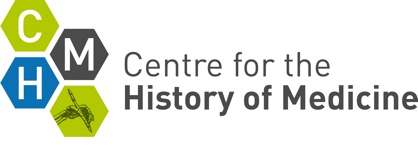In the immediate postwar years, the Department of the Health and the newly-formed NHS were committed to combatting tuberculosis through the national screening of the population. The Mass Miniature Radiography (MMR) programme used mobile units, housed in vans, to carry x-ray equipment into communinites to encourage people to come forward for x-ray. A large fleet of these mobile vans in conjunction with a dedicated mass media health education campaign were the central elemetns of the programme. Using 100mm film and low doses of radiation the portable nature of the screening enabled a far greater reach for the campaign than would otherwise have been possible. The Units travelled to factories, schools, community halls and town centres in order to be easily accessible and therefore convenient for members of the public. The arrival of the Units in an area was promoted by locally-focused poster campaigning as well as through the machinations of the local press. X-ray screening produced quick results for detecting tubercuslosis and facilitated easy referrals if futher investigation was needed. These campaigns throughout the late 1940s and into the early 1960s did much to demonstrate the benefits of screening for the idenitification of individuals with tuberculosis who could then receive targeted treatment such as streptomycin. It set a precedence for the use of screening measures as an important way of providing preventive health services at population level and has been followed by the introduction of other screening services, such as those now provided for breast cancer, cervical cancer and bowel cancer.
JH
For more information on mass miniature radiography in Scotland read this recent blog by Clair Millar at the Lothian Health Services Archive: https://lhsa.blogspot.co.uk/2016/11/mass-miniature-radiography.html
Should you wish to remove a comment you have made, please contact us



When I was a 4 year old child I was diagnosed as having a “shadow on my lung” which indicated I had tuberculosis. I had a very bad cough for some time before this happened.
I had to leave my family and stay in a sanitorium hospital for about 9 months . I was treated with a course of Streptomycin and other medication which required many many injections. Every so often I was sedated and treated in an operating theatre which I remember as making me feel a bit strange.
Much of my early education took place in Poole Hospital, near Middlesbrough.
We also used to do crafts such as making jewellry.
Seemed a long time to a 4 year old, 9 months. I do remember the nurses were so kind to me. Some of the big lads used to lock me and possibly other kids in the big wicker laundry baskets which was pretty scary but I remember the nurses coming to the rescue 🙂
I eventually got well and went home but I had to leave all my toys at the hospital which was a bit sad.
I have not had any further problems with TB since my stay in the hospital in 1959. Thank you NHS. Thank you to the kind nurses 🙂
Thank you for sharing your experiences with us. It’s very interesting to hear about the continuing place of the sanatoria in TB treatment well after the inception of the ‘antibiotic age’. We have been given a wonderful scrapbook of sanatorium life from just a bit earlier, which also shows the close bonds formed between patients and staff in these institutions. Check back in the new year for some digital images, and please tell us more about your time there if you can. I should say that I was also a child TB patient, but by the time I was diagnosed in the 1970s, the sanatorium had disappeared completely — though I do remember those injections VERY clearly indeed: ouch!
Oh and PS: have you seen the really interesting story added by another reader (and child TB patient) about TB hospital experiences? Look here: https://peopleshistorynhs.org/the-childrens-wa…ow-hospital-1953/
I think the object number of 1984 refers to the year the item was obtained by the science museum; I have viewed several items on the science museums catalogue related to medicine in the second world war which also have a 1984 prefix.
Ah thank you for this useful feedback! I’ve updated the object description to reflect this – much appreciated!
I am a woman 73 years old, when I was probably 8years old my grandmother had tuberculosis screening xrays taken for herself and me in portable vans. We did this for probably 4 or 5 years. I was diagnosed with lung cancer in 2006. Would getting these xrays have caused a predisposition to develop cancer? Just curious, I have never smoked.
Thank you for sharing this memory with us, and for your question. Today, in part because of long-running health education campaigns to encourage people to stop smoking, we strongly associate lung cancer with smoking. But in fact, while smoking considerably increases the risk of lung cancer, it is not the only cause. Approximately 10-15% of all people who are diagnosed with lung cancer never smoked. Sadly, these cases are also often diagnosed late, simply because we don’t expect to see– and doctors sometimes forget to look for — lung cancer in non-smokers. Radiation is one risk factor for many kinds of cancer, but the amount of radiation exposure produced during annual or semi-annual medical investigations (as opposed to, for example, radiotherapy) is fairly small. So it is unlikely that even the relatively early x-ray machines you and your grandmother would have experienced played a role in your lung cancer so many years later. IF you want to read more, try this website: https://www.bir.org.uk/useful-information/history-of-radiology/ There’s a nice page on the risks of x-rays in the 1960s here: https://www.bir.org.uk/useful-information/history-of-radiology/1960s/1960s-radiation-risks.aspx
I’ve just found my mums and dads booking form they both worked for the same company so wonder if the mobile unit visited there
Wednesday 13th September 1950 at 2.50pm
Just looking at mums says finishing room that was where she worked and her works number 83.
Top says Female Manchester Regional Hospital Board
Mass Radiography Unit
How interesting! Yes, it is very likely that the MMR van visited their worksite. We’d love to see these documents and could share them in this gallery if you like — drop us a line at NHSHistory@warwick.ac.uk if you would be willing to do this and we can help!
Where can I find statistics about the number of lung cancer cases found by the mass chest x-ray service?
For historical data, I tend to look to the periodic surveys of this topic in the medical press — for example, this article in the BMJ is very useful: https://europepmc.org/backend/ptpmcrender.fcgi?accid=PMC1874086&blobtype=pdf
Note that routine MMR surveys, as delivered in, e.g. workplaces up to the declined in frequency over the course of the 1960s, and by the middle of that decade the majority of cases identified by MMR were among people referred by their GPs, rather than picked up opportunistically in the course of routine screening (though major mass screening drives that encouraged large proportions of urban populations, e.g. in Glasgow 1957 did pick up a greater number of cases).
Thank you for your query and for engaging with our website. Historian Carsten Timmermann has written a history of lung cancer which might be helpful for your query – https://www.palgrave.com/gb/book/9781403988027